Briefly discussed in this post: 19 books (The Last Man Takes LSD; Deconstructing Postmodern Nietzscheanism; The Emancipated Spectator; The Agony of Eros; Matter and Memory; Phenomenology and the Crisis of Philosophy; Sounds Wild and Broken; Mistaken Identity; Free to Obey; Liberalism; The Analytic Encounter; Playing and Reality; Spadework for a Palace; How is a Person to Be?; Pure Colour; Second Place; Aftermath; Afterparties; and The Original Face); 5 movies (Asteroid City; The Blackening; Alone at Night; Belladonna of Sadness; and The Kindergarten Teacher); and 2 documentaries (Unknown; and Curse of the Chippendales).
BOOKS
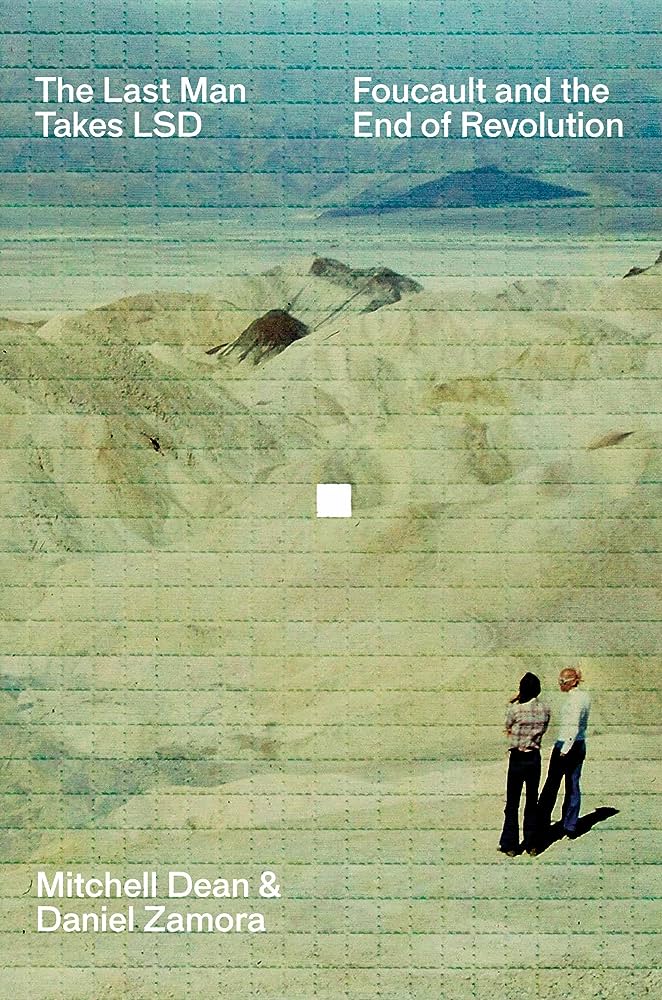
1. Dean, Mitchell & Daniel Zamora. The Last Man Takes LSD: Foucault and the End of Revolution (2021).
Foucault’s ethical turn always baffled me. While his earlier work excited me and inspired me to creatively engage in the environments connected to my work, I often found myself puzzled or simply bored by his later reductive focus on matters of lifestyle and self-care rooted in a thoroughly depoliticized reading of Greek texts. How do we go from sustained criticism of psychiatric power, the clinic, the prison, and the various disciplinary apparatuses and discourses of modernity, to a celebration of the innovative and entrepreneurial subject of neoliberalism as a desirable way of life?
Mitchell Dean and Daniel Zamora answer all my questions. They show how and why Foucault’s anti-totalitarianism and rejection of the power-politics deployed by State-based Marxism and Socialism, led him to and “aesthetics of existence” that merges well (and quite explicitly at times) with neoliberalism—given that Foucault understood neoliberalism as offering the possibility for broader forms of subjectivity to emerge beyond and outside the Christian hermeneutic of the self. In this way, Foucault helps to shift our collective focus from things like socioeconomic exploitation and class struggle to the problem of subjectification. Political struggle is removed from standard political institutions and replaced by an ethics of individual experimental praxis. Consequently, “resistance” has nothing to do with overcoming socioeconomic exploitation, and everything to do with liberating oneself from assigned identities and moving, via a “lifestyle anarchism” to a new self. Ultimately, for Foucault, “[t]he objective is not to develop new social structures and provisions but to open up spaces of tolerance in which individuals can begin to maximize choice in both the life they will lead and the way in which they are governed.”
This is just a hint of the detailed, fair, and highly critical ways in which Dean and Zamora engage Foucault. As they demonstrate, Foucault’s ethics have, in many ways, have gone mainstream in the “progressive” neoliberalism of the electoral Left. In fact, the implementation of this ethics has been a large factor in the increased dispossession of most of us. For those who care for these debates, this is highly recommended reading.
2. Rehmann, Jan. Deconstructing Postmodernist Nietzscheanism: Deleuze and Foucault (2022).
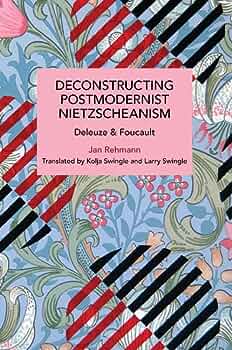
Easily one of the most exciting and stimulating works of theory I have read in a long time, Jan Rehmann’s take-down of Deleuze and Foucault is thoroughly researched and, even to a Foucault-lover such as myself, just as thoroughly convincing. Essentially, via a highly selective and altogether misleading reading of Nietzsche (Rehmann devastates both Foucault and Deleuze on this point; although Foucault never claimed to be doing anything other than reading Nietzsche however the hell he felt liker reading him, Deleuze was always taken to be something of an expert of Nietzsche and Rehmann absolutely annihilates his reading here), Rehmann argues both Deleuze and Foucault and end up engaging in an aestheticization of the political, retreating into the personal ethics of seemingly transformative self-care (mostly Foucault here) or the use of radical rhetoric to cover up the absence of radical praxis in one’s life (mostly Deleuze here). Thus, postmodernist Nietzscheanism becomes aligned with the Gramscian notion of the passive revolution. Yet, in this way, a form of aristocratic elitism—the very thing explicitly espoused by Nietzsche but disavowed by his postmodern acolytes—reemerges in the domain of the theoretical and the academy.
Anyway, I’m barely touching on the richness, scope, and depth of this work. It really is fantastic and, if you’re into theory, I highly recommend it.
3. Rancière, Jacques. The Emancipated Spectator (20009 [2008]).

With the ascendency of neoliberal capitalism, people are transformed into individual units of human capital. These individual units of human capital are primarily responsible for producing their own selves as a particular kind of marketable and commodified self. This self primarily engages with the world of things, experiences, places, and ideas, as a consumer.
This then dramatically changes how we produce, consume, and think about art but it audio, visual, tactile, or literary art. In fact, this problematizes our understanding of the efficacy of art as a means of producing political change in the “real world.” The criticism here (and this is the criticism that Rancière wants to attack in order to emancipate the spectator) is that within the society of the spectacle, even or especially when it tries to challenge or break out of the spectacle, art becomes complicit in simply reinforcing the spectacle and all that has been identified as problematical about it after Debord first coined the term. Rancière acknowledges the internal logic of the criticism, but then, in the careful, thoughtful, compassionate, and deeply-respectful-of everyday-people approach that I love so much about Rancière, he invites us to reconsider what it means to be a spectator and how it is that spectating does, in fact, have the potential to change us (instead of merely offering us an affective experience that we gobble up before moving on to the next thing). We are mistaken if we think of art like a sermon in a church—a sermon that inevitably fails as those who attend church, week after week, still go out to curse at their neigbhours, cheat on their partners, think racist thoughts, or whatever else—wherein the preacher is looking to provoke just the right intensity of feeling so that people really do change but, like, for real, this time and then the whole world changes, too, and, hooray, utopia! Instead, although he doesn’t use this language, for Rancière the experience of art (spectating), when framed well, can be more akin to experiencing a holding environment that opens the self to creativity, play, and, over time, new relations to and understandings of the self which then can, indeed, have a profound impact on how we are in the world.
Rancière is, in my opinion, perhaps the most underappreciated of all the French theorists. He is brilliant but clear-eyed. Critical but also deeply respectful of who and what he studies. Recommended reading.
4. Han, Byung-Chul. The Agony of Eros (2017).

Is it possible for two distinct units of human capital to fall in love? Or does the commodification of everything and the entrepreneurialization of the self transform love into an act of consumption or a market-based exchange premised upon neoliberal rationality? Indeed it does, says Byung-Chul Han, and so love is not what it used to be. For love, Han argues, requires recklessness, sacrifice, and the transformation of the self to a state of pure vulnerability before the radical alterity of an Other who cannot be absorbed into pre-existing categories or assigned to pre-existing roles/uses. So that’s nice and romantic and stuff but I’m not sure this is gonna help me score any more dates on Tinder.
5. Bergson, Henri. Matter and Memory (1908).
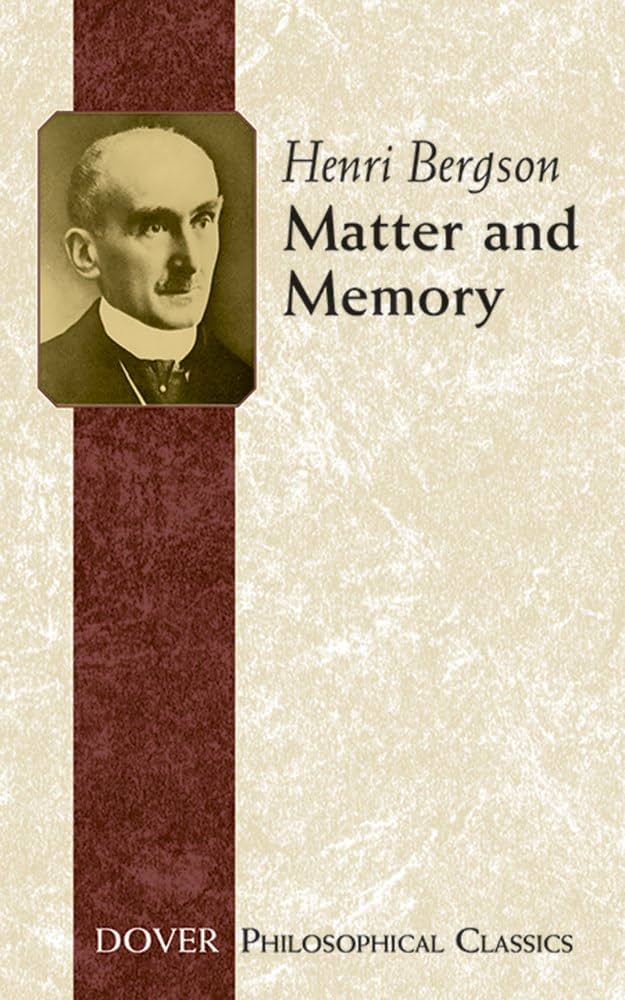
In the philosophical domain of those who emphasize becoming more than being, process more than stasis, dynamic energy and the ebb and flow of networks and connections, as well as those who draw insights from post-Newtonian physics and brain science into their philosophy, the influence of Henri Bergson becomes obvious very quickly. And so I thought I would read me some Bergson. And that’s what I did. And, hmmm, while it is certainly true that he helped establish a certain trajectory within philosophy, that trajectory has also moved well beyond what he wrote.
6. Husserl, Edmund. Phenomenology and the Crisis of Philosophy (1965).
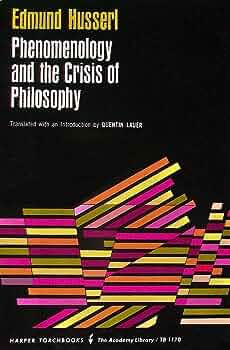
After finally reading some Husserl, I understand more why he was so appealing to a Nazi like Heidegger. This is peak Eurocentric Enlightenment hubris and the fact that that second of the two essays that appears in this short book was presented in 1935, after Husserl had already been (momentarily) banned from the Library of the University of Freiburg due to his Jewish heritage almost beggars belief. Philosophy (well, his philosophy) as the highest science, Europe as the truly unique saviour of the savage nations of the world, all this is here. It’s the kind of relic that belongs in a museum next to the tools used by the Inquisition
7. Haskell, David George. Sounds Wild and Broken: Sonic Marvels, Evolution’s Creativity, and the Crisis of Sensory Extinction (2022).
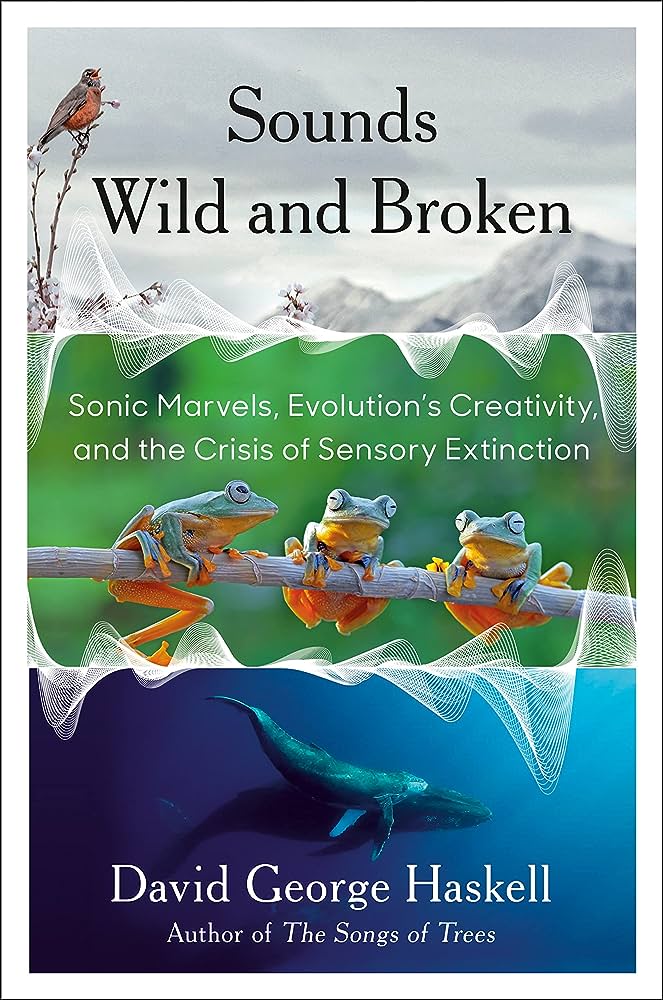
When I read The Songs of Trees (2018), David George Haskell’s second book, it opened my ears to a whole different way of listening and opened me to a whole different way of being in the world. So I was excited to read Sounds Wild and Broken, although I knew it would be tinged with more sadness and distress about the state of the world than his earlier work. I enjoyed much of the first half, when Haskell was talking about all the ways in which creatures communicate via sound and what the imposition of different sounds do to various environments, but I found the focus on human technological innovation on the second half to be rather tedious. Learning about how marine arthropods communicate is fascinating to me. Learning about the technological that is required to capture those sounds or used to create a high-tech, cutting-edge auditorium, much less so. Thus, I was excited to start it and happy to finish it. I still recommend The Songs of Trees to anyone and everyone.
8. Haider, Asad. Mistaken Identity: Race and Class in the Age of Trump (2018).
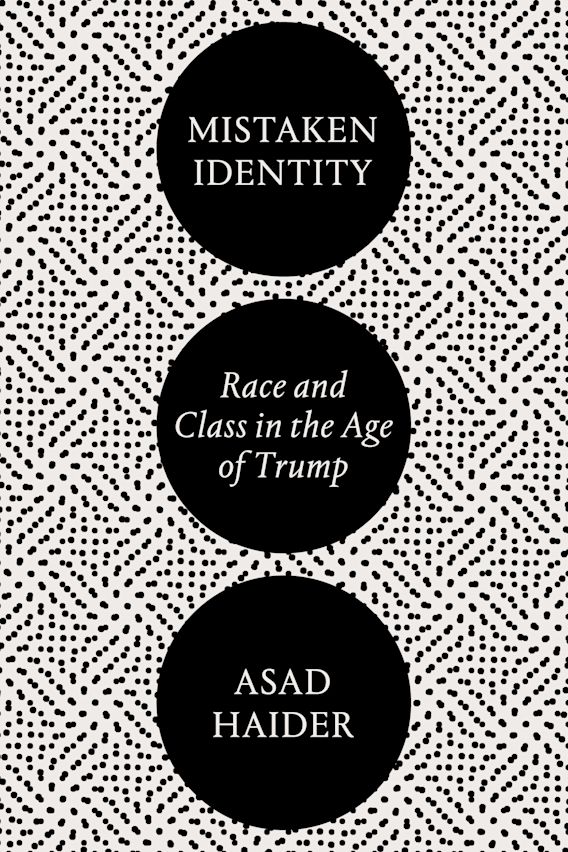
The theory and practice of “identity politics” has faced criticisms from both the Right and the Left. While the Right wants to remove all discussions of race, gender, and class from our political discourse in order to reinforce the hegemonic rule of patriarchal, racial capitalism, those on the Left have noted how the mainstreaming of identity politics has actually reinforced neoliberalism. Thus, in this book, Asad Haider argues that identity politics functions in order to neutralize movements against racial oppression. “It is,” he argues, “the ideology that emerged to appropriate [the] emancipatory legacy [of these movements] in service of the advancement of political and economic elites.” What we see is a process by which solidarity- and coalition-building movements, whose strength and power to effect change was rooted precisely in this movement building, is assaulted, dismantled, and redirected into the service of individual subjects who can deploy their identity in ways that advance their human capital and that undermine calls for systemic change in relation to oppression. Hence, just as elite women co-opt and undermine the feminist struggle by positioning themselves as champions and exemplary figures of feminism quo feminism (cf. Hilary Clinton), so also, Haider argues, elite Blacks have co-opted much of the legacy of race-based struggle and the civil rights movement in order to advance their wealth and status within neoliberal and carceral capitalism, even as oppression continues to dominate the experience of Blackness in the USA today (numerous Queer scholars and authors have, of course, raised similar objections to how “homonormativity” has undermined the Queer struggle; cf. the whole conversation around “no cops at Pride”). Thus, individual demands for inclusion—especially amongst those with the wealth, property, and connections to see those demands fulfilled—end up undermining the possibility of systemic change. As Haider demonstrates both from personal experience and scholarly research, this focus on the individual self, is lethal to collective organizing.
I wasn’t sure how much I would encounter in Haider’s book that I hadn’t already read elsewhere, but I actually ended up really enjoying it. If you’re looking for somewhere to go to understand what’s problematical with identity politics, I recommend you pick this up.
9. Chapoutot, Johann. Free to Obey: How the Nazis Invented Modern Management (2023 [2020]).
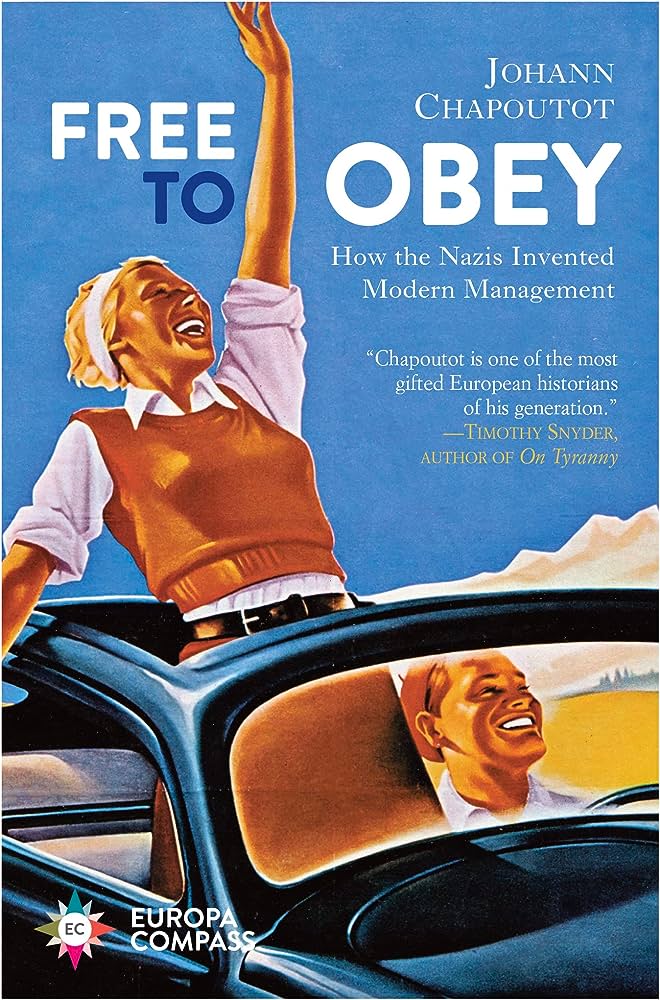
In looking at the ways in which some of the prominent figures in the Nazi administration went on to teach at leading business schools in Germany after the war, Johann Chapoutot boldly and unapologetically overstates his case. The Nazis did not, in fact, invent modern management. They did, however, contribute to its development in some significant ways. For example, their emphasis upon “freedom of methods” but not “freedom of ends” paves the way for the neoliberal governance model that seeks to “empower” managers and those on the frontlines to innovatively engage in their work in whatever way they determine to be best—but they may only do this in order to meet goals established by those further up the chain. It is in this way that those who are not at the top of the chain of command are “free to obey.” Do whatever you want or need to do, in order to produce the desired outcomes—but you better produce the outcomes we tell you to produce. Otherwise, you will find yourself to be defunded, outsourced, superfluous, and fired. Anyway, I found this essay to be entertaining and a little bit enlightening but not nearly as thorough as I hoped it would be. What conclusion can we draw from this? It turns out that business men doing business things—be they American Democrats or German Nazis or Canadian Liberals or Italian Fascists—are all remarkably interchangeable. That’s business.
10. Losurdo, Domenico. Liberalism: A Counter-History (2014 [2011]).
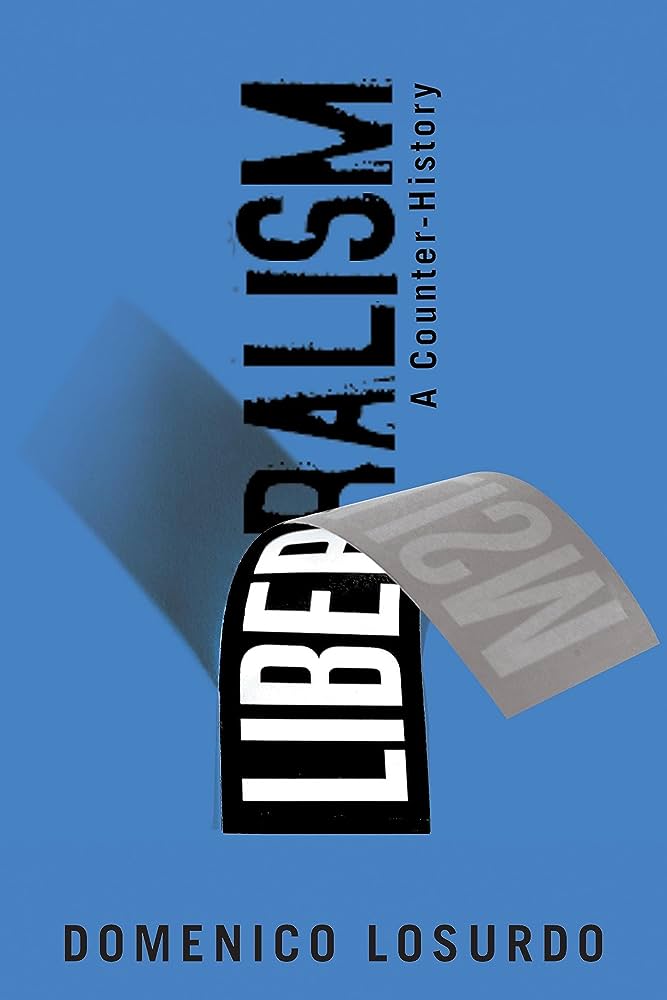
How is it, Domenico Losurdo asks, that the people who spoke most vehemently about the freedom and rights and the individual at the dawning of what we call liberalism, were also the people who defended, unto the death, their right to keep Black people as chattel slaves and their right to engage in genocide against Indigenous peoples in various colonial occupations? What exactly is Liberalism and how can it be that these two things are intimately linked to the birth of Liberalism, its founding fathers, and most of its proponents up until, if not the present moment, then at least the Second World War?
These are excellent questions and, although he rambles and repeats himself at times, Losurdo does an equally excellent job of answering them (except that, for some reason, he continues to refer to Indigenous peoples across Turtle Island as “Indians” which is frankly baffling given that this book was first published in 2011). Essentially, the freedom urged by the White men with property and wealth who founded Liberalism, was freedom from the tyranny of those who sought to rule over them (the aristocracy, the agents of the church, and also the government of nascent nation states), paired with freedom to engage as despotic rulers over other people who they considered their property (largely Black folx) or who they considered subhuman and part of nature to be subdued by whatever level of violence they deemed desirable (largely Indigenous folx). It is up to debate as to how much Liberalism has changed, or if it has really changed in any fundamental way, since it first came to be.
However, as Losurdo demonstrates, some of the language, themes, and proclamations of Liberalism inspired others who were considered (by Liberals) to be mentally ill Radicals (they were labeled as such because they argued Europeans were actually the ones acting savagely when they colonized other lands and engaged in rapacious acts of plunder and genocide, and because they argued that slavery should actually be abolished, and because they argued that wealth should be more equitably distributed). Thus, Losurdo also explores some of the history of how Liberalism responded to the victories and defeats experienced by various revolutionary movements, from the Paris Communes to the Haitian and Mexican Revolutions. All in all, a thoroughly enjoyable read which provides a much needed corrective to our understanding of Liberalism and which helps us to understand why Liberalism gives us people like Bill and Hillary Clinton, instead of people like Toussaint L’Ouverture and Emiliano Zapata.
11. Jacoby, Mario. The Analytic Encounter: Transference and Human Relationship (1984).

Jungians are a curious crew. I distrust what little I know about there model of psychoanalysis and their focus on universal archetypes. Plus, it doesn’t help that notable douchebags like Jordan Peterson and his mob of men love Jung. However, in reading about transference and countertransference recently (both in the works of Lacan and Bollas), I got a bit more curious and I decided to read Mario Jacoby’s lectures on this subject. It’s a handy little summary of how both Freud and Jung approach the topic and then how Jacoby moves through the analytic encounter and navigates the transference and counter-transference dimension of it. In many ways, what he urges is the thoughfully-considered engagement, and self-reflective vulnerability of the analyst who comes to the analysand not as an entirely detached observer or truth-producing expert, but as another human being who, in some ways, becomes a tableau on which the analysand can write and, at key moments, offers avenues for interpretation and exploration that assist the analysand with better understanding who they are and why they feel what they feel and do what they do so that they can arrive at a more integrated self.
12. Winnicott, D. W. Playing and Reality (2005 [1971]).
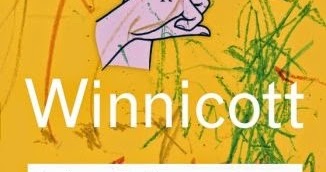
I have been increasingly impressed by writers from the British school of psychoanalysis. Adam Phillips, Darian Leader, and Christopher Bollas have all written some of the very best books I have read on any subject and have immensely aided me in how I think about myself and engage with others. The trajectory of this school was established by D. W. Winnicott and all three of these authors refer to his work quite a bit. So I figured it was time to read him. Often in my studies, I have found it more fruitful to read primary sources instead of, say, all the secondary literature that grows at an industrial rate around those sources (although, of course, secondary sources and commentaries can greatly aid us in our understanding, as the two books about Foucault mentioned above clearly demonstrate… and we’ve all seen what people do with sacred texts when they call for a “plain reading of Scripture”—yikes!). That said, I was a bit disappointed with this book. It was… okay… but it did feel dated and didn’t have as many key takeaway points as I hoped to find. Of course, his critical point about the role that play has in therapy, healing, and wellness more generally, is absolutely essential and altogether neglected in neoliberal social services that are funded to produce objectively measured outcomes pertaining to an individual’s integration into the market economy—but this emphasis in his work was already well known to me. Obviously, folks like Phillips, Leader, and Bollas aren’t engaging in acts of scholastic exegesis of the work of the school’s founder. They are all developing that school in very exciting, creative, and inspiring ways.
13. Krasznahorkai, László. Spadework for a Palace (2022 [2018]).
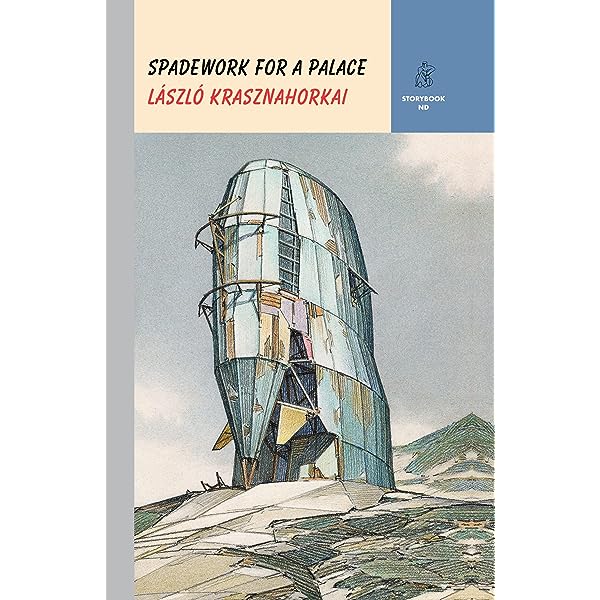
One of the real masters of long sentences and short stories, László Krasznahorkai remains a favourite of mine. Although, the more I read his work, the more I think that this is mostly because he perfected his form in Seiobo There Below and, while other works I have read by him come more or less close to producing the affect he generates in those stories, no other work quite takes me there (although there are flashes of brilliance and moments that still make me gasp or laugh, especially in his longer works, like Baron Wenckheim’s Homecoming). Spadework had a few good moments but the overall project didn’t tickle my pickle and even the narrative arc and final dénouement seemed played out to me. Mostly, I kept reading because the absence of periods made it damn near impossible for me to put the book down.
14. Heti, Sheila. How Should a Person Be? (2012).
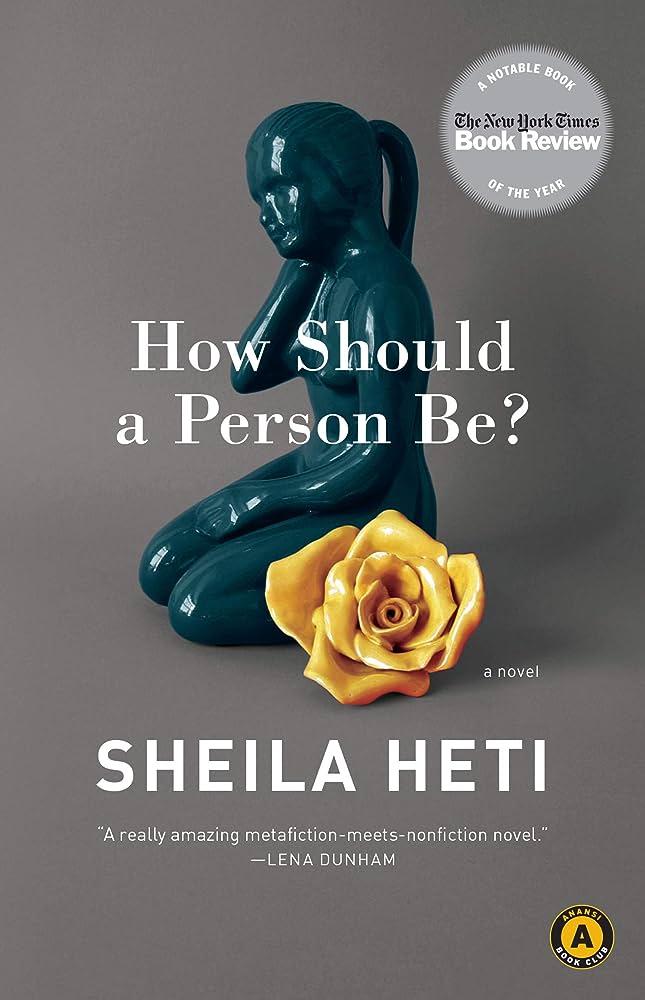
The quality of Canadian literature being produced in the second decade of the twenty-first century is monumentally better than what I was taught to consider great Canadian literature in the ‘80s and ‘90s (authors like Margaret Atwood, Robertson Davies, Margaret Laurence, and Mordecai Richler). Read Sheila Heti and you will wonder why anyone saw anything at all in Margaret Atwood’s work (except, perhaps, a few especially well-timed gimmicks). In her exploration of the titular question of this book, Heti blends the sacred and the profane, the lyrical and the mundane, the absolutely hilarious and the desperately sincere, in a deceptively effortless manner that left me awed and convinced that I will now read every book she has written. Very highly recommended reading.
15. Heti, Sheila. Pure Colour (2022).
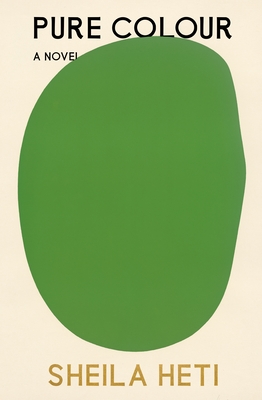
So, of course, I immediately went and read Heti’s most recent novel after I finished How is a Person to Be?. The beginning and ending were extrodinary—made me gasp and laugh and weep—but I felt like the central diversion wasn’t entirely successful. Nonetheless, the quality of writing here is amongst the very best of anything being written today (imo). Honestly, if you read books, reading books by people who are truly experts of their craft makes a real difference. If you aren’t a snob before you read literature like this, you will become one after. Just don’t be a jerk snob. Be a fun snob. Read Sheila Heti.
16. Cusk, Rachel. Second Place (2021).

Moving away from her more autobiographical works, Rachel Cusk returns to her particular style of narrative fiction (which is on full display in her earlier Outline trilogy), with this book about art, rootedness, longing, and conflictual desires—I want to be rooted and at peace and at home in this place with this person AND I want to break out, destroy this, fall passionately in love with someone else, and wander over the face of the earth. The writing is excellent and captivating. Cusk is worth reading for this reason alone. But I also enjoyed how she mixes tender-heartedness and compassion with some of her unfiltered, direct observations of truths that hurt to hear. Not quite up to the standard she set with the Outline trilogy, but better (imo) than some of the work that arose out of her own experiences of domestic devastation, I’m looking forward to seeing what she writes next.
17. Cusk, Rachel. Aftermath: On Marriage and Separation (2012).
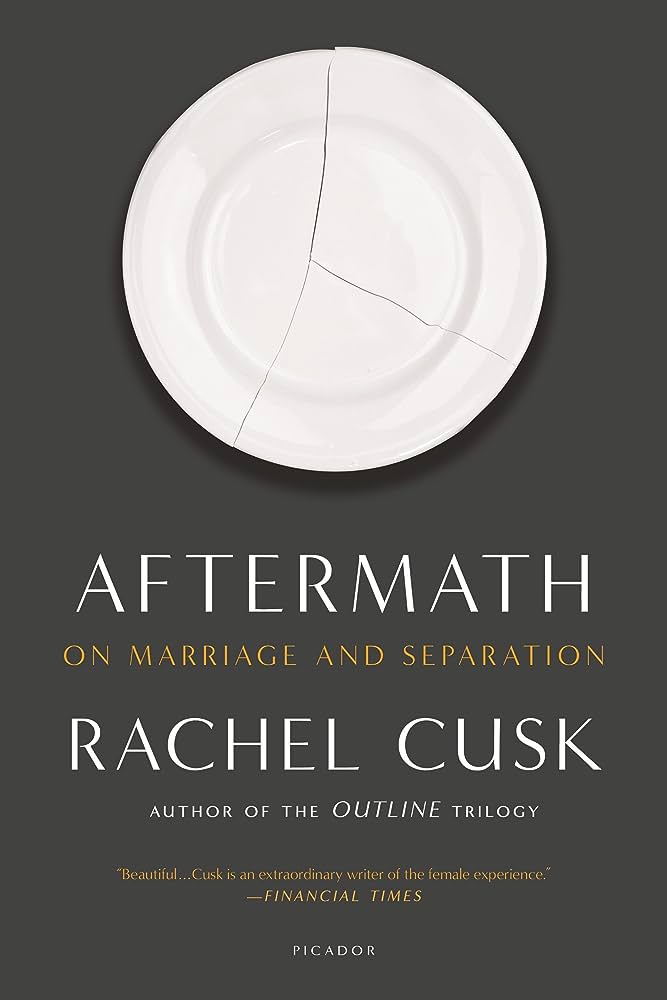
Going through the collapse of an intimate relationship wherein lives have become intertwined, and children have become involved, and life trajectories have been fundamentally altered, and who one is and was and will be is fundamentally other than it would have otherwise been, is a difficult thing. It hurts. We say and think things that are not our best words and thoughts. Even when we try to be careful, thoughtful, objective about our self and our own role in things, we’re usually missing something and that missing thing shows up not so much in what we do or do not say but in our tone. This is the case with Rachel Cusk’s intimately personal work on the immediate aftermath of her divorce. Her immense talent is obvious in everything she writes. But this is not her best work.
18. So, Anthony Veasna. Afterparties: Stories (2021).
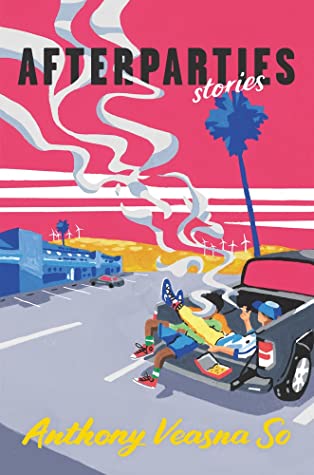
Offering a glimpse into the life of Cambodian refugees in California, and what it’s like to grow up in America as the children of those who survived Pol Pot (and, in the case of some characters, what it’s like to grow-up as a Queer child of Cambodian refugees in California), this collection of short stories by Anthony Veasna So is a compelling first collection. The way it blends tenderness, insight, humour, soul-deep grief, and also persistent strength, is very well done, and I figured his next collection had the potential to be great. I was dismayed to learn that he died of a drug overdose at the age of 28 and this collection was published posthumously.
19. Morissette, Guillaume. The Original Face (2017).
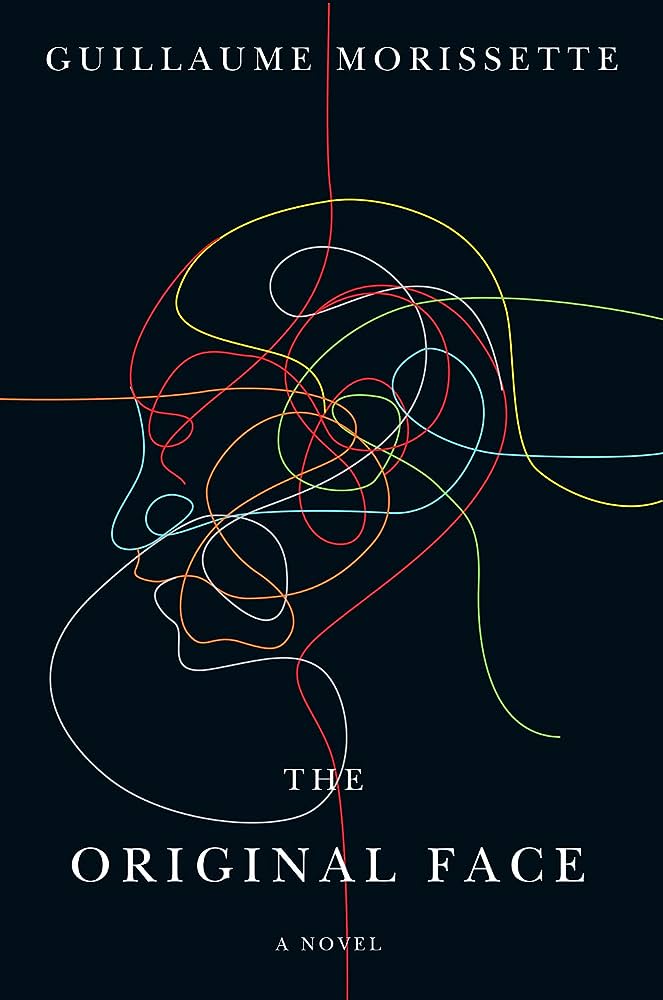
Having really enjoyed my recent romp through Canadian lit (Catherine Fatima, Rachel Cusk, Sheila Heti), I thought I’d also see what an up-and-coming male-identified author was doing. Guillaume Morissette had multiple short novels published between 2010 and 2020 and I found The Original Face for a few dollars at a used book shop. I think Morissette tries too hard to be clever and world-weary and wise, but in a “post-internet” kind of way.He wants to talk about art and creativity and love and alienation (oh, and some stuff about climate change, too, which is woven in to add to the affect but which never really succeeds at much), but he mostly sounds like a Peter Pan artist who has spent his life watching videos online and going to avant-garde art shows and never really found himself or, alas, much of anything interesting to say to the rest of us.
MOVIES
1. Anderson, Wes. Asteroid City (2023).

Those who appreciate Wes Anderson’s aesthetic and his distinctive blend of humour, absurdity, grief, and loss, will like everything he makes. Those who don’t feel the same will inevitably feel like his stuff shows real talent but remains mostly meh. I belong in the former group (confession: I have watched all of his films), and, yep, I thought Asteroid City was fantastic in every way. I rarely laugh out loud while watching movies as much as I did while watching it. But I rapid cycled from laughing one minute to feeling deeply moved and on the verge of tears the next minute—all while feasting on the expert craftspersonship evident in every shot. I don’t want to say much about the plot or key themes because I’d rather not spoil anything. Highly recommended.
2. Story, Tim. The Blackening (2022).
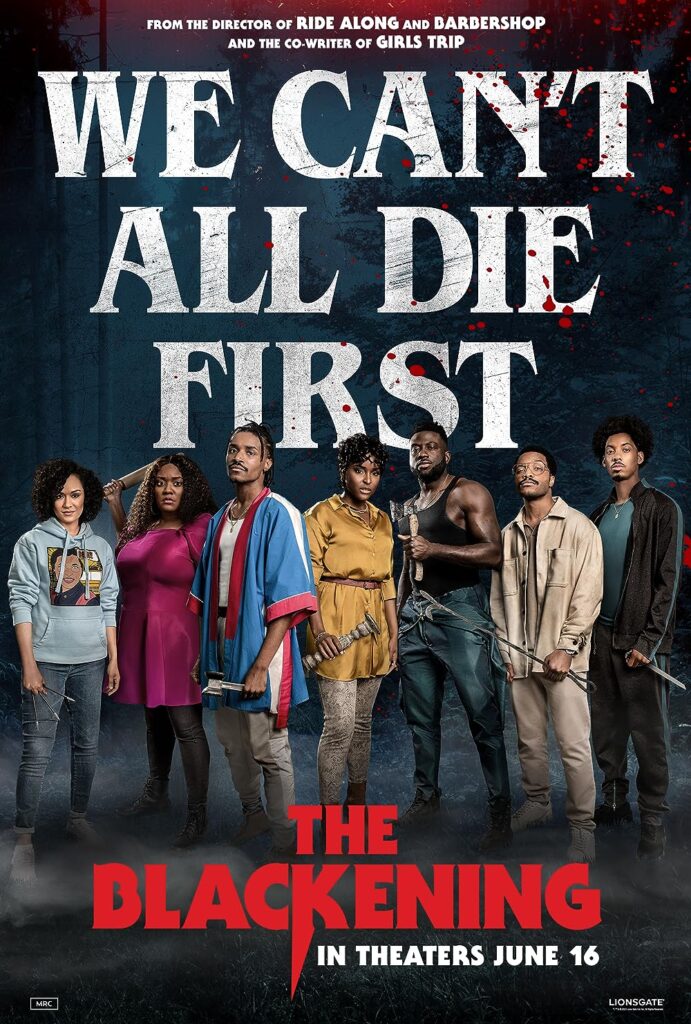
Tim Story skyrocketed to fame when Barbershop came out in 2002. Twenty years later, he created The Blackening which is one of the smartest, funniest, and all around most entertaining horror movies ever made. This is Critical Race Theory meets The Cabin in the Woods. And if Drew Goddard’s and Joss Whedon’s version of that story takes a played-out horror topos and reinvigorates it with humour, meta-references to the genre more broadly, and a political analysis of class war, Tim Story examines the bleached-out state of this genre and says, I’m gonna do that, but better and all-the-way Black. And, damn, does he ever. The horror element itself is almost an afterthought. The jumpscares aren’t scary, the gore is hardly there. But this is totally fine. Everyone is obviously having so much fun doing what they’re doing, the whole thing is a delight to witness. Totally recommend.
3. Giannopoulos, Jimmy. Alone at Night (2022).
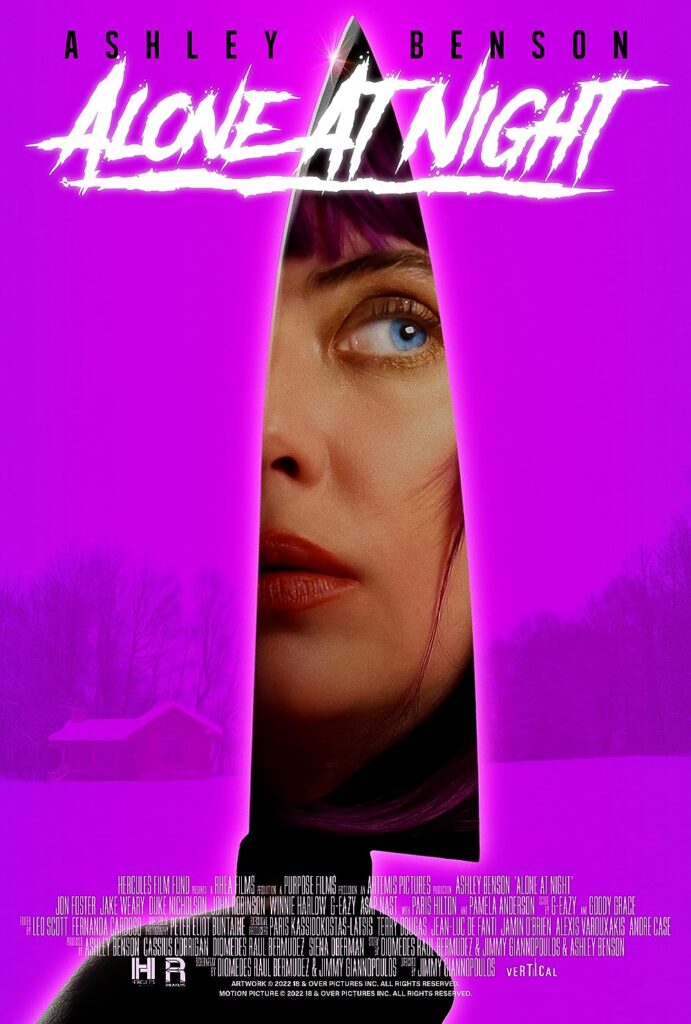
A cam girl goes to a cabin to recover from a break-up. Turns out that one of her cam customers is a stalker who, inexplicably, has stalked her to her current location. People die. There’s a twist at the end. Does this movie have anything thoughtful or interesting to say about camming or sex worker? No. I think the protagonist does cam work strictly so the director can have some shots of a mostly nude, conventionally attractive lady to try and keep the viewer’s interest. Does this succeed? No. Does the movie do anything interesting with the stalker/slasher genre? Also, no. Does the twist and the sideplot involving the reality TV show the protagonist watches contribute something unique or interesting to the movie? No. I suspect it was only added in to try and make a totally lifeless and generic piece appear contemporary or novel. Does it succeed in this way? No. Should you or anyone watch this movie? No.
4. Yamamoto, Eiichi. Belladonna of Sadness (1973).

When you start digging into somewhat underground films from around the world that gained notoriety back in the day, you inevitably hear about a few different movies: Ruggero Deodato’s Italian Cannibal Holocaust (1980), the entire “Nazisploitation” subgenre (most notoriously exemplified by Canadian director’s Don Edmond’s Ilsa, She Wolf of the SS (1975), and Eiichi Yamamoto’s adult animated film from Japan, Belladonna of Sadness (1973). Animated films for adults weren’t unique to Japan at that time. For example, in the same year that Belladonna came out, the Hungarian, Marcel Jankovics garnered a lot of praise for Johnny Corncob; in France, René Laloux dropped his experimental sci-fi film, Fantastic Planet; and Ralph Bakshi blew-up the American scene with Fritz the Cat one year earlier (fun fact: he also made the first animated version of The Lord of the Rings in 1978).
What made Belladonna stand out, according to the reviewers, was its devastating presentation of sexual violence. So I’ve known about this movie for a long time. But I only decided to watch it this month. As a piece of art, it is remarkable. Timeless. The style is so refined that it is just as striking in 2023 as it was in 1973. Thematically, the story is simply a variation on familiar fairy tale themes and could easily be found in a volume compiled by the Grimm brothers or Alexander Afanasyev. Undoubtedly, some of the material is very explicit (although what people experienced as shockingly brutal and difficult to watch was different before the advent of Internet porn or the arrival of the “torture porn” subgenre with Saw in 2004). It’s highly stylized but, yes, it does produce a strong emotional response. Not at all recommended viewing for either those who are triggered by this sort of thing or who get off on this sort of thing. Given that I’m not as easily triggered as I used to be, I found the film moving, sad, beautiful, brutal, and thought-provoking (in a contemplative or meditative way).
5. Colangelo, Sara. The Kindergarten Teacher (2018).
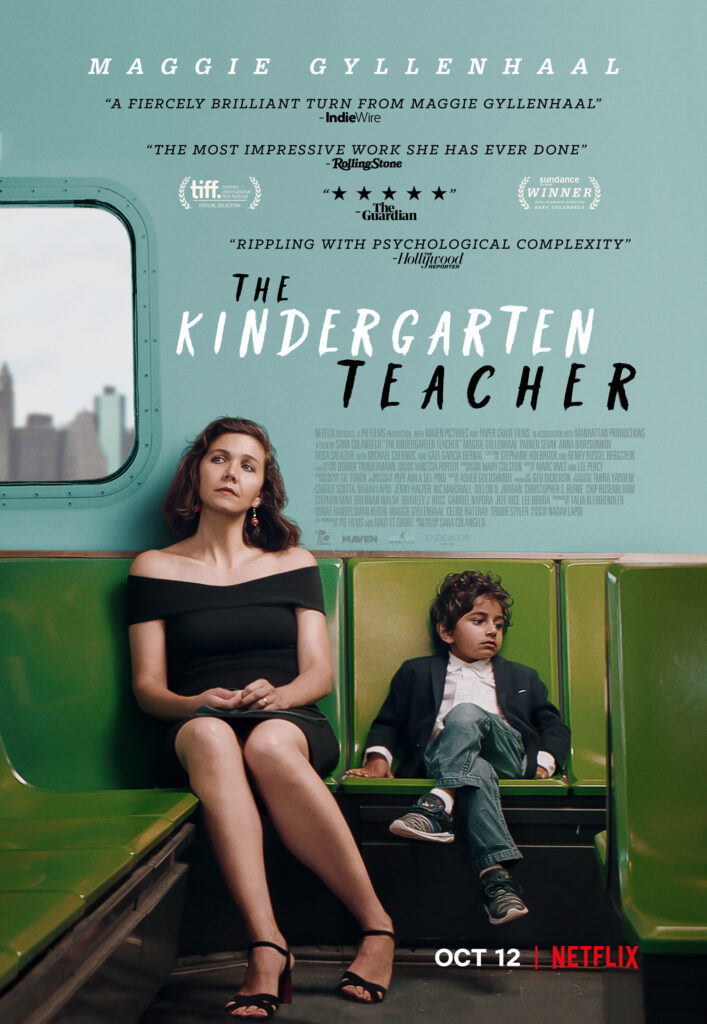
Beware of films that remind you of how tedious and uninspiring daily life can be, and of how dangerous it is to dream that it could be otherwise! This is what we find in The Kindergarten Teacher, wherein Maggie Gyllenhaal longs for romance, specialness, and poetry—not her marriage, work and motherhood, and the totally uninspired and stereotypical poems she writes. Her longing for escape leads to small acts of plagiarism and exploitation of the poems recited by one of her students (poems I recognized because they were written by Ocean Vuong and Kaveh Akbar!) to a telos that is much scarier and darker. I’m not given to watching this kind of moody drama these days, but the subtle and outstanding performance of Gyllenhaal—exactly what I have come to expect from her—carried me through.
DOCUMENTARIES
1. Mannucci, Mark. Unknown: Cave of Bones (2023).

I’ve read and enjoyed a few books on the topic of evolutionary anthropology so I was excited to watch this Netflix documentary on Homo naledi and the team of researchers that have been publishing reports on what they have been finding in South Africa’s Rising Star Cave. Unfortunately, even as a non-expert, it became very clear to me that the documentary was presenting extremely bold and unverified claims and was presenting these claims in a way that would lead the uninformed viewer to conclude that these are scientific facts. But they’re not. It’s too bad because: (1) the discovery of Homo naledi and all the bones found in the Rising Star Cave is truly remarkable; and (2) presenting claims as facts without the requisite evidence or support from critical peer reviews—from real experts who understand the complexity of trying to understand, for example, if fossilized charcoal in a cave is from a fire or from something else, from a fire that happened in the cave or that was brought in from somewhere else, from a fire that was started by hominids or started by something else, and so on—undercuts the possibility of trying to verify if, in fact, there is some truth behind these claims (which are really only very bold hypotheses at this point). If, for example, homo naledi, a line of hominids that does not overlap with our ancestors, buried their dead, did cave art, used fire, and used tools, this would be an astronomical discovery. All the more reason for careful work! But the lead investigator seems to be intent on presenting an unverified (and actually quite questionable, as mentioned by some peer reviewers of some of reports released to date) hypotheses as a new scientific paradigm. This then undercuts any further work he does in this area. Methinks he is just grasping for eternal fame. As he says in the documentary, “everyone in the world should know about this discovery, it is one of the greatest scientific discovery’s ever made to date” (my paraphrase). But, of course, what he is really saying is that “everyone in the world should know about me, the discoverer of this discovery” (my translation).
2. Vile, Jesse. Curse of the Chippendales (2021).
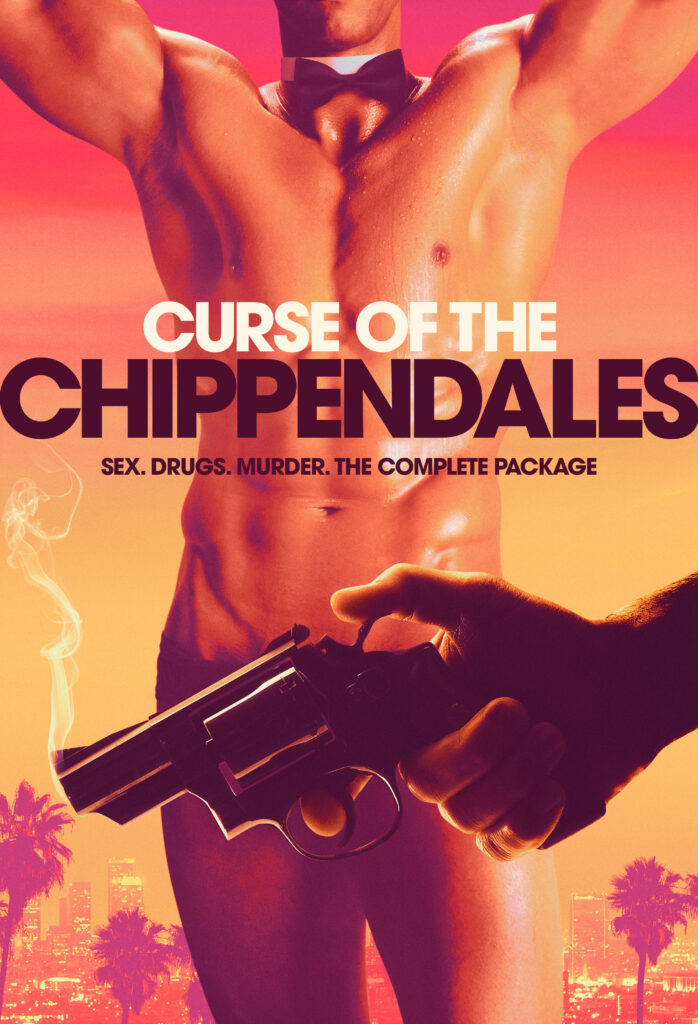
Watching Chippendale dancers interact with women in the earliest days of the Chippendale dynasty was one of the most entertaining and wildly amusing things I have watched in a long time. My son and I laughed and laughed and laughed. Unfortunately, over the four episodes of this docuseries, the storyline becomes a lot more filled with talking heads relating how they solved a murder and murder-for-hire case (things got real dark with the senior management of the Chippendales, which ultimately led to the downfall of the dynasty, even if a Vegas show still exists). So, if you like to see buff dudes with mullets dance around in their tighty-whities, while the FBI try to figure out why people are getting killed, you’ll dig this series. Personally, I thought the first two episodes were rockin’ (like those abs, bro!), but the last two episodes were only average.